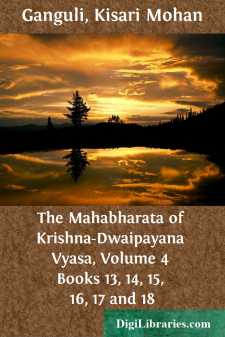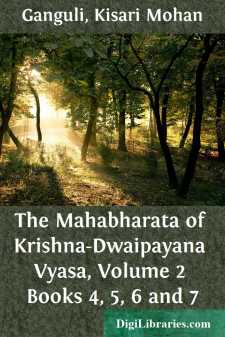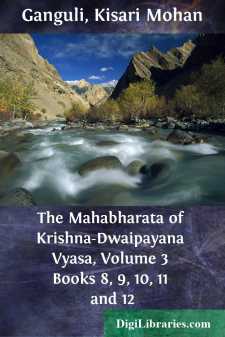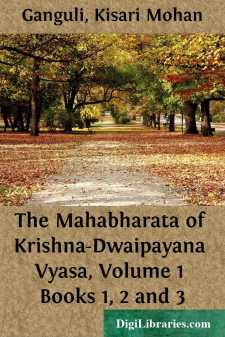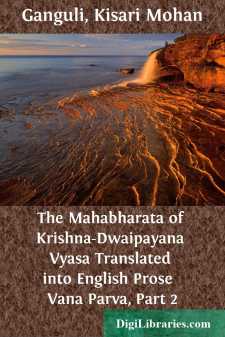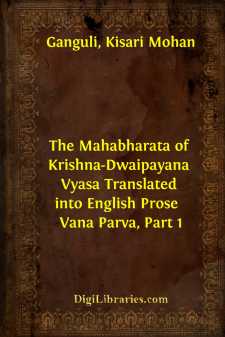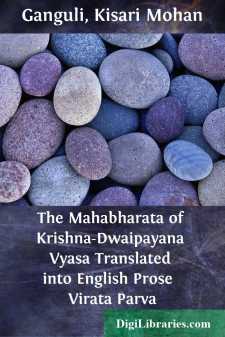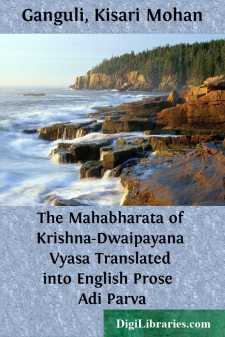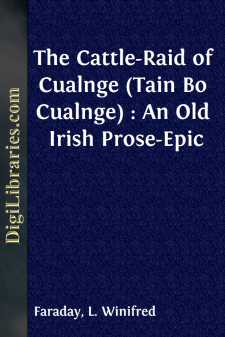Literary Collections
- American 84
- Ancient, Classical & Medieval
- Asian 1
- Australian & Oceanian 1
- Canadian 55
- Continental European 121
- English, Irish, Scottish, Welsh 179
- Essays 160
- General 24
- Letters 46
- Middle Eastern 1
Ancient, Classical & Medieval Books
Sort by:
THE MAHABHARATA ANUSASANA PARVA PART I SECTION I (Anusasanika Parva) OM! HAVING BOWED down unto Narayana, and Nara the foremost of male beings, and unto the goddess Saraswati, must the word Jaya be uttered. "'Yudhishthira said, "O grandsire, tranquillity of mind has been said to be subtile and of diverse forms. I have heard all thy discourses, but still tranquillity of mind has not been...
more...
SECTION I (Pandava-Pravesa Parva) OM! Having bowed down to Narayana, and Nara, the most exalted of male beings, and also to the goddess Saraswati, must the word Jaya be uttered. Janamejaya said, "How did my great-grandfathers, afflicted with the fear of Duryodhana, pass their days undiscovered in the city of Virata? And, O Brahman, how did the highly blessed Draupadi, stricken with woe, devoted to...
more...
1 Om! Having bowed down unto Narayana, and unto that most exalted of male beings, Nara, and unto the goddess Sarasvati also, must the word Jaya be uttered. Vaishampayana said, "After Drona had been slain, O monarch, the royal warriors (of the Kaurava army) headed by Duryodhana, with hearts filled with great anxiety, all repaired to Drona's son. Lamenting the loss of Drona, and deprived of...
more...
THE MAHABHARATA ADI PARVA SECTION I Om! Having bowed down to Narayana and Nara, the most exalted male being, and also to the goddess Saraswati, must the word Jaya be uttered. Ugrasrava, the son of Lomaharshana, surnamed Sauti, well-versed in the Puranas, bending with humility, one day approached the great sages of rigid vows, sitting at their ease, who had attended the twelve years' sacrifice of...
more...
SECTION CXLV (continued from previous e-book) And the ruddy geese, and the gallinules and the ducks and the karandavas and the plavas and the parrots and the male kokilas and the herons in confusion flew in all directions, while some proud elephants urged by their mates, as also some lions and elephants in rage, flew at Bhimasena. And as they were distracted at heart through fear, these fierce animals...
more...
SECTION I (Aranyaka Parva) Om! Having bowed down to Narayana, and Nara the foremost of male beings, and the goddess Saraswati also, must the word Jaya be uttered. Janamejaya said, "O thou foremost of regenerate ones, deceitfully defeated at dice by the sons of Dhritarashtra and their counsellors, incensed by those wicked ones that thus brought about a fierce animosity, and addressed in language...
more...
SECTION I (Pandava-Pravesa Parva) OM! Having bowed down to Narayana, and Nara, the most exalted of male beings, and also to the goddess Saraswati, must the word Jaya be uttered. Janamejaya said, "How did my great-grandfathers, afflicted with the fear of Duryodhana, pass their days undiscovered in the city of Virata? And, O Brahman, how did the highly blessed Draupadi, stricken with woe, devoted to...
more...
SECTION I Om! Having bowed down to Narayana and Nara, the most exalted male being, and also to the goddess Saraswati, must the word Jaya be uttered. Ugrasrava, the son of Lomaharshana, surnamed Sauti, well-versed in the Puranas, bending with humility, one day approached the great sages of rigid vows, sitting at their ease, who had attended the twelve years' sacrifice of Saunaka, surnamed Kulapati,...
more...
by:
Stephen Langdon
Introduction In the year 1914 the University Museum secured by purchase a large six column tablet nearly complete, carrying originally, according to the scribal note, 240 lines of text. The contents supply the South Babylonian version of the second book of the epic ša nagba imuru, “He who has seen all things,” commonly referred to as the Epic of Gilgamish. The tablet is said to have been found at...
more...
INTRODUCTION The Cattle-Raid of Cualnge [Note: Pronounce Cooley] is the chief story belonging to the heroic cycle of Ulster, which had its centre in the deeds of the Ulster king, Conchobar Mac Nessa, and his nephew and chief warrior, Cuchulainn Mac Sualtaim. Tradition places their date at the beginning of the Christian era. The events leading up to this tale, the most famous of Irish mythical stories,...
more...


